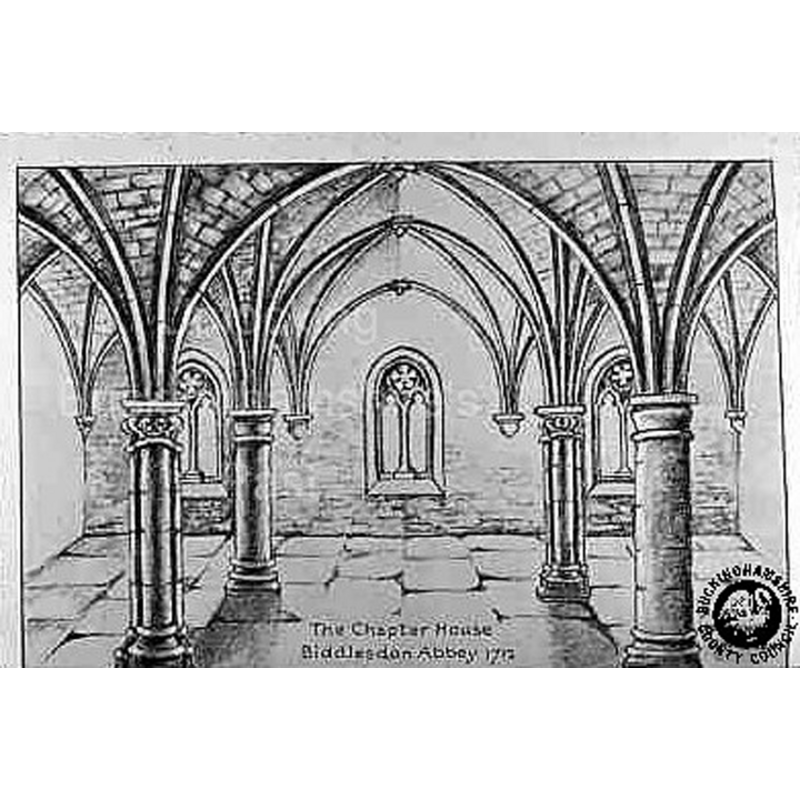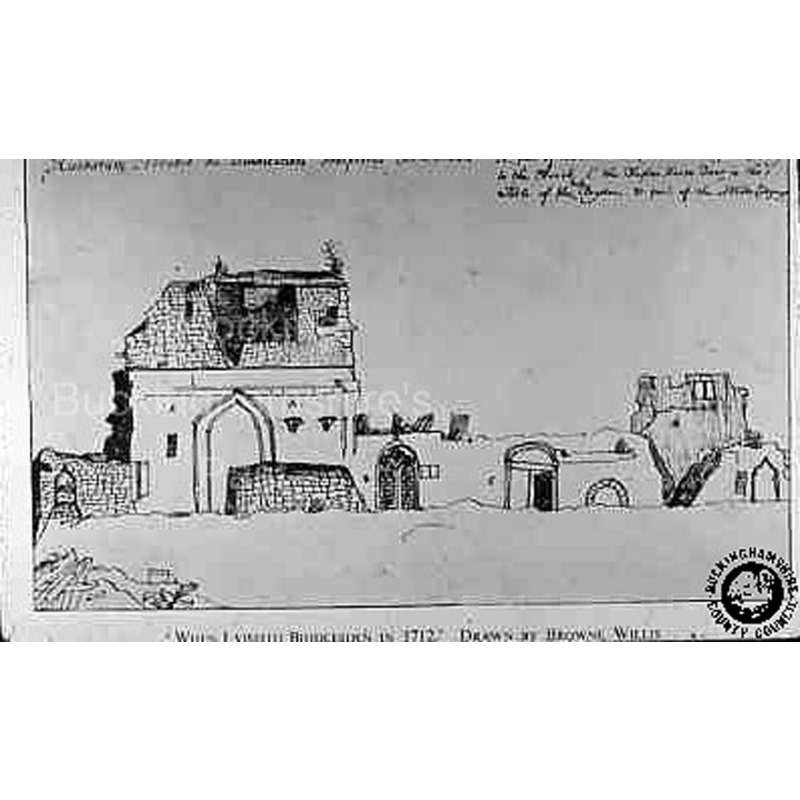Biddlesden Abbey / Bechesdene / Betesdene / Betlesden / Bidlesden / Bitlesden / Bytlesden

Image copyright © Buckinghamshire County Council, 2016
Reproduced a/p permitted use stipulated by the Buckinghamshire County Council on their site
Results: 2 records
view of church exterior
Scene Description: exterior of the abbey in ruins -- artist's rendition of 1712
Copyright Statement: Image copyright © Buckinghamshire County Council, 2016
Image Source: 1712 drawing by Browne Willis in [https://ubp.buckscc.gov.uk/HBSMRGateway/LibraryLinkFiles/145.jpg] [accessed 14 January 2016]
Copyright Instructions: Reproduced a/p permitted use stipulated by the Buckinghamshire County Council on their site
view of church exterior - abbey - chapter house
Scene Description: interior of the abbey -- artist's rendition of 1712
Copyright Statement: Image copyright © Buckinghamshire County Council, 2016
Image Source: 1712 drawing by Browne Willis in [https://ubp.buckscc.gov.uk/HBSMRGateway/LibraryLinkFiles/146.jpg] [accessed 14 January 2016]
Copyright Instructions: Reproduced a/p permitted use stipulated by the Buckinghamshire County Council on their site
INFORMATION
FontID: 17301BID
Object Type: Baptismal Font1?
Church/Chapel: Abbey Church [originally parish church of St. Mary's; later abbey church; Chapel of St. Margaret [cf. FontNotes]]
Church Patron Saints: [originally St. Mary; St. Margaret]
Church Location: Biddlesden, Buckinghamshire NN13 5TR
Country Name: England
Location: Buckinghamshire, South East
Directions to Site: Located off (S) the A43, 5 km ENE of Brackley (Nhants), 8 km NW of Buckingham
Ecclesiastic Region: Diocese of Oxford
Century and Period: 12th century (early?), Romanesque
Church Notes: the original church of St. Mary was confirmed to the abbey in 1147; the chapel of St. Margaret existed by the 13thC and survived the destruction of the abbey buildings; later abandoned [cf. FontNotes]
Font Notes:
Click to view
There are two entries for Biddlesden [variant spelling] in the Domesday survey [http://opendomesday.org/place/SP6340/biddlesden/] [accessed 14 January 2016], neither of which mentions cleric or church in it. Sheahan (1862) informs that this Abbey was founded in 1147 by Ernald de Bosco [i.e., De Bois] for monks of the Cistercian order and points out: "After the Abbey was founded, the Archbishop of Canterbury admitted the monks to the possession of Biddlesden parish church, with all its rights and privileges; and the conventual church and the parish church continued to be one and the same -forming part of the Abbey buildings- until the Dissolution" [NB: this, a common occurrence in medieval times, meant the conventual church would have a baptismal font for the adminitration of baptism]. By Sheahan's time, "No vestiges of the conventual and parish church can now be traced", but, as he notes, Browne Willis' History of the Hundred of Buckingham [published in 1755] reported that the ruins of the abbey church "were left in good part standing when I visited it in 1712, and there were then to be seen the walls of the east side of the cloyster, and a part of the tower". [NB: we have no information on the medieval font that was used in the Abbey church until the Dissolution of the Monasteries [1536-1541]]. Sheahan (ibid.) notes that, after the Dissolution, and in the 17th and 18th centuries, the parishoners used the Chapel of St. Margaret for their cult needs; in turn this too was destroyed and a wing of the mansion was used instead; its font is described by Sheahan as "small, and of marble". The entry in the Victoria County History (Buckingham, vol. 4, 1927) does not mention a font in either the old chapel or the original church.
COORDINATES
Church Latitude & Longitude Decimal: 52.053889, -1.079722
Church Latitude & Longitude DMS: 52° 3′ 14″ N, 1° 4′ 47″ W
UTM: 30U 631664 5768772
REFERENCES
Victoria County History [online], University of London, 1993-. Accessed: 2016-01-14 00:00:00. URL: https://www.british-history.ac.uk.
Sheahan, James Joseph, History and topography of Buckinghamshire, comprising a general survey of the county, preceded by an epitome of the early history of Great Britain, London; Pontefract: Longman, Green, Longman, and Roberts; William Edward Bonas [...], 1862
